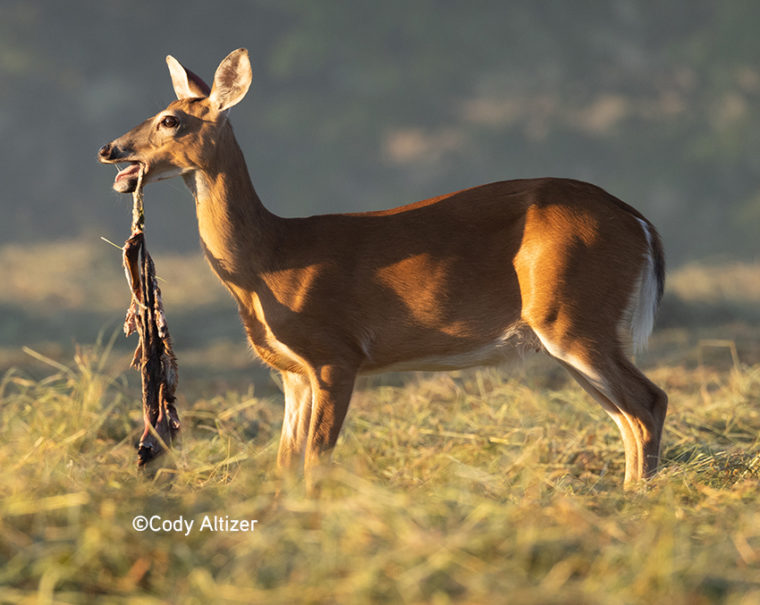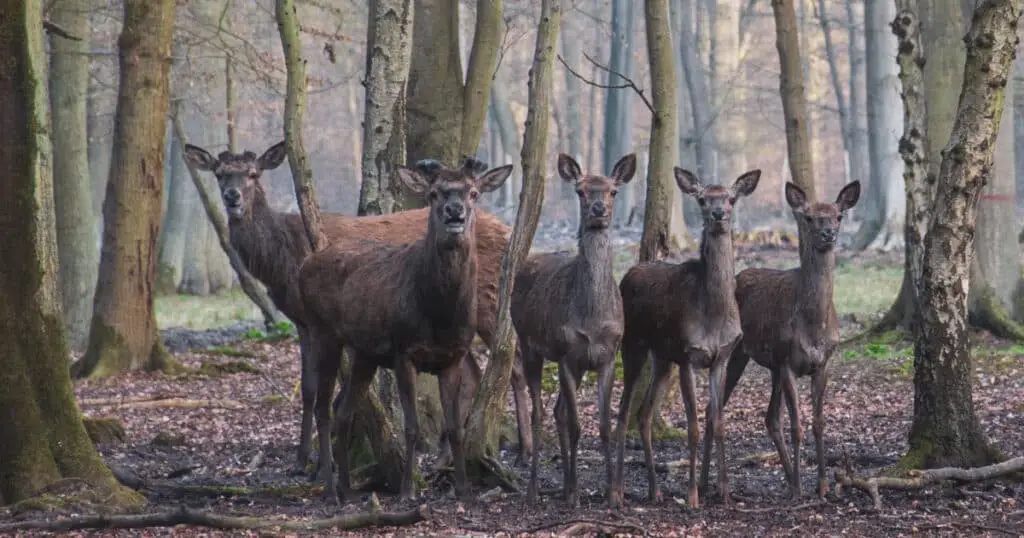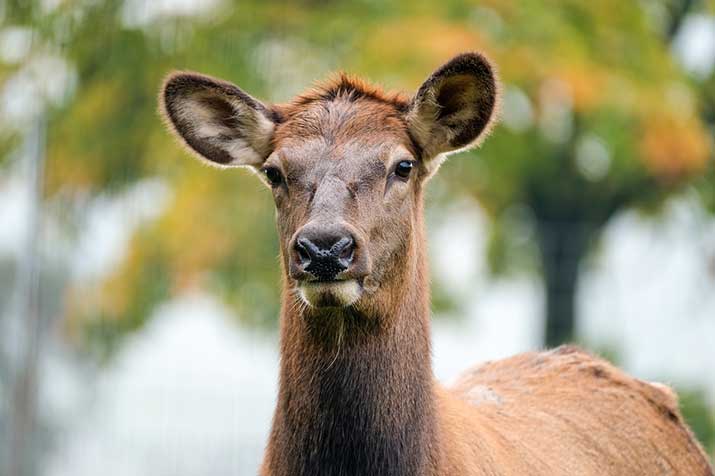Do deer mourn their dead? Yes, they do, but in their own way.
Their response is different from humans, yet it shows a form of grief. Deer are social animals with strong bonds. When a member of their group dies, they often display behaviors that suggest mourning. Observers have noted deer staying close to the deceased, sniffing, nudging, and even standing guard.
These actions indicate a recognition of loss. While their mourning is not as complex as human grief, it is a clear sign of their emotional depth. Understanding these behaviors helps us appreciate the intricate lives of these gentle creatures. So, do deer mourn their dead? Their actions speak volumes. Let’s delve deeper into their mourning rituals.

Credit: deerassociation.com
Emotional Intelligence In Deer
Deer are often seen as simple creatures. But they have a depth of emotions. Their ability to feel and express emotions is often underestimated. Deer display signs of grief and sadness, showing that they mourn their dead. This emotional intelligence is fascinating and worth exploring.
Social Bonds
Deer form strong social bonds within their groups. These bonds help them survive. A group, often called a herd, sticks together. The herd members care for one another. They groom each other and rest together. When a deer dies, the herd feels the loss deeply. The remaining members may show signs of distress. They may return to the spot where their friend died. This behavior indicates mourning and a strong bond.
Communication Methods
Deer communicate using various methods. They use vocal sounds, body language, and scents. These methods help them express feelings and share information. When a deer is in distress, it may call out. Other deer respond to these calls. They gather around the distressed deer. This shows empathy and concern. The herd may stay close to a dead deer for some time. This act of staying close shows mourning. It also helps the herd understand the loss.
Signs Of Mourning In Deer
Deer, like many animals, exhibit signs of mourning when they lose a member of their group. Observing these signs helps us understand their emotional depth. This section explores the behavioral changes and vocalizations that indicate mourning in deer.
Behavioral Changes
Deer show clear behavioral changes when they mourn. They often become less active and appear more subdued. You might see them lying near the body of the deceased. They may also spend more time alone, away from the herd. These changes in behavior suggest a deep emotional response to loss.
Vocalizations
Vocalizations are another sign of mourning in deer. When a deer dies, others in the group might make specific sounds. These sounds can be soft and mournful, almost like a cry. These vocalizations indicate distress and sadness. They are a form of communication among deer, expressing their grief.
Comparative Mourning In Animals
Many animals show signs of mourning. They seem to feel sadness. This behavior is observed in various species. Different animals have unique ways of expressing grief. Understanding these behaviors can help us learn more about animal emotions.
Elephants
Elephants are known for their strong family bonds. They often mourn their dead. When an elephant dies, its family members gather around the body. They touch and caress the dead elephant with their trunks. Some elephants have even been seen covering the body with leaves and branches. This act shows respect and care for their lost family member.
Primates
Primates, such as chimpanzees and gorillas, also show mourning behaviors. They often stay close to the body of a deceased family member. Sometimes, they will groom the dead body. This behavior indicates a deep emotional connection. In some cases, primate mothers carry their dead infants for days. This act reflects their difficulty in letting go.

Credit: worlddeer.org
Field Observations
Field observations provide valuable insights into the behavior of deer. Wildlife biologists and enthusiasts have spent countless hours studying deer in their natural habitat. These observations help us understand how deer interact with their environment and each other. One intriguing behavior is whether deer mourn their dead.
Case Studies
Several case studies have been documented regarding deer mourning. In one instance, a doe was observed staying near her deceased fawn for several days. She appeared distressed, often nudging the fawn’s body and pacing around it. This behavior suggests a strong emotional bond. Another case involved a group of deer that gathered around a deceased member, sniffing and touching the body. Such actions indicate a form of mourning or at least a recognition of death.
Research Findings
Research on deer mourning is still in its early stages. However, some findings are compelling. Studies have shown that deer exhibit behaviors similar to those seen in other animals known to mourn. For example, they may stay close to the body of the deceased, vocalize in distress, or even display signs of depression. These behaviors support the idea that deer may have some form of mourning process.
| Behavior | Observed Actions |
|---|---|
| Staying Close | Remaining near the deceased body for extended periods |
| Vocalizing | Making distress calls or sounds |
| Physical Contact | Nudging or touching the body of the deceased |
While more research is needed, these observations and findings point to the possibility that deer do mourn their dead. The evidence so far is compelling and suggests that deer are more emotionally complex than previously thought.
Mourning Rituals
Many animals have unique ways of dealing with death. Deer are no exception. Their mourning rituals can be both fascinating and heart-wrenching. Understanding how deer grieve can offer us insights into their emotional lives. This section explores the different ways deer show grief and how their community reacts.
Grief Responses
Deer show various grief responses when a member of their group dies. They may stand near the body for long periods. This behavior indicates a form of silent mourning. They often lower their heads and sniff the body, as if trying to understand what happened.
Some deer have been observed licking the deceased. This action might be an attempt to revive their fallen companion. It shows a deep connection and sense of loss. Such responses underline their emotional complexity.
Community Reactions
The entire deer community reacts to the death of one of their own. They often gather around the body, forming a circle. This communal behavior is a sign of collective mourning. It shows that deer have a sense of community.
| Behavior | Description |
|---|---|
| Sniffing the Body | Trying to understand the death |
| Licking the Deceased | Attempting to revive or show affection |
| Forming a Circle | Collective mourning by the group |
Such behaviors are not just random. They point to a structured way of dealing with loss. This structured behavior strengthens their social bonds. It also helps the group cope with the absence of a member.

Credit: movinggiants.org
Impact Of Mourning On Deer Behavior
Deer are complex animals with behaviors that often leave us in awe. Mourning, a behavior seen in many animals, affects deer in various ways. This section explores how mourning impacts their feeding and movement patterns. Understanding these changes can provide insight into their emotional lives.
Feeding Patterns
Grieving deer often show changes in their feeding habits. They may eat less or become picky eaters. This change can weaken their health. A grieving deer might avoid areas where they fed with a lost mate or fawn. This can limit their food options. Over time, malnutrition can set in, making them more vulnerable.
Movement Patterns
Deer in mourning may alter their movement patterns. They might wander aimlessly or stay near the spot where they lost a companion. This behavior makes them easier targets for predators. They may also avoid areas where they had shared memories with their lost one. Such changes can disrupt their normal routines. It can also affect their ability to find food and shelter.
Scientific Perspectives
Do deer mourn their dead? This question has intrigued scientists for years. To understand this, we look at two key perspectives: ethologists and psychologists. Each offers unique insights into deer behavior and emotions.
Ethologists’ Views
Ethologists study animal behavior in natural settings. They observe how deer act when a member of their herd dies. Some ethologists believe that deer show signs of mourning. They have seen deer standing near the body of a dead companion. These deer appear to be in a state of grief, often showing unusual behaviors.
Ethologists note the following behaviors in mourning deer:
- Standing vigil over the dead body for hours
- Sniffing or nudging the deceased
- Making vocalizations
These actions suggest that deer may have a sense of loss. Yet, ethologists are careful not to anthropomorphize. They avoid attributing human emotions to animals without more evidence.
Psychologists’ Views
Psychologists focus on the mental processes behind behaviors. They explore whether deer experience grief similarly to humans. Some psychologists believe that deer can feel a form of sadness. They argue that these emotions are not unique to humans.
Psychologists have conducted studies to support this idea:
- Observation of herd dynamics after a death
- Analysis of stress levels in mourning deer
- Comparing behaviors to other social animals
These studies suggest that deer may experience emotional distress. They react to the loss of a group member in ways that hint at mourning. Yet, this area of research is still evolving.
Both ethologists and psychologists provide valuable insights. Their findings help us understand the complex emotions of deer. While the debate continues, one thing is clear: deer are more than just simple animals. They have complex behaviors and may even feel grief.
Conservation Implications
Understanding if deer mourn their dead has significant conservation implications. Their reactions to death can teach us about their social structures. This knowledge can influence our approaches to habitat preservation and minimizing human interference.
Habitat Preservation
Deer need large areas of natural habitat to thrive. Preserving these areas ensures they can live and interact naturally. When deer have space, they can form strong social bonds. These bonds might include mourning behaviors. Protecting their habitat means protecting their social dynamics.
Conservation efforts should focus on keeping these environments intact. Reducing deforestation and urban sprawl is crucial. Wild spaces allow deer to behave naturally. This includes any mourning rituals they might have.
Human Interference
Human activities can disrupt deer populations. Roads and construction fragment their habitats. This makes it hard for deer to stay together. It can also affect their social structures. Understanding their mourning behaviors can highlight the impact of these disruptions.
Reducing human interference can help maintain deer social bonds. Less interference means healthier populations. It also means preserving any mourning behaviors. This knowledge can guide policies and conservation strategies.
Frequently Asked Questions
Do Deer Show Grief For Their Dead?
Yes, deer show signs of grief. They often linger near a dead companion.
How Do Deer React To A Dead Member?
Deer may nuzzle or stay close to the dead. They seem to show sadness.
Can Deer Remember Their Dead?
Deer appear to remember their dead for some time. They may return to the site.
Do Deer Mourn Like Humans?
Deer mourning is different from humans. But they do show some signs of grief.
Why Do Deer Visit Dead Companions?
Deer might visit dead companions out of curiosity or a need to understand. It shows their connection.
Conclusion
Deer do show signs of mourning their dead. They linger around the deceased. Their behavior changes, and they become more cautious. While it’s not human-like mourning, it’s clear they feel loss. Observing deer can help us understand animal emotions better.
Respect their space and let nature take its course. Deer, like many animals, have complex lives. Their actions remind us of the deep connections in nature. Emotions are not exclusive to humans. Deer also experience them in their own ways.